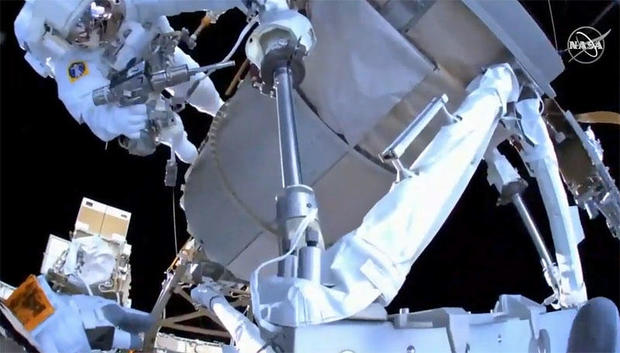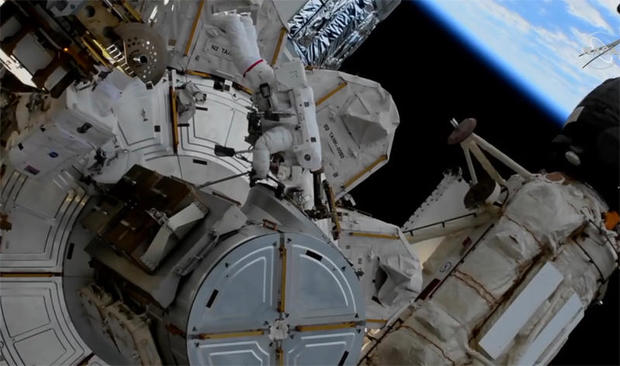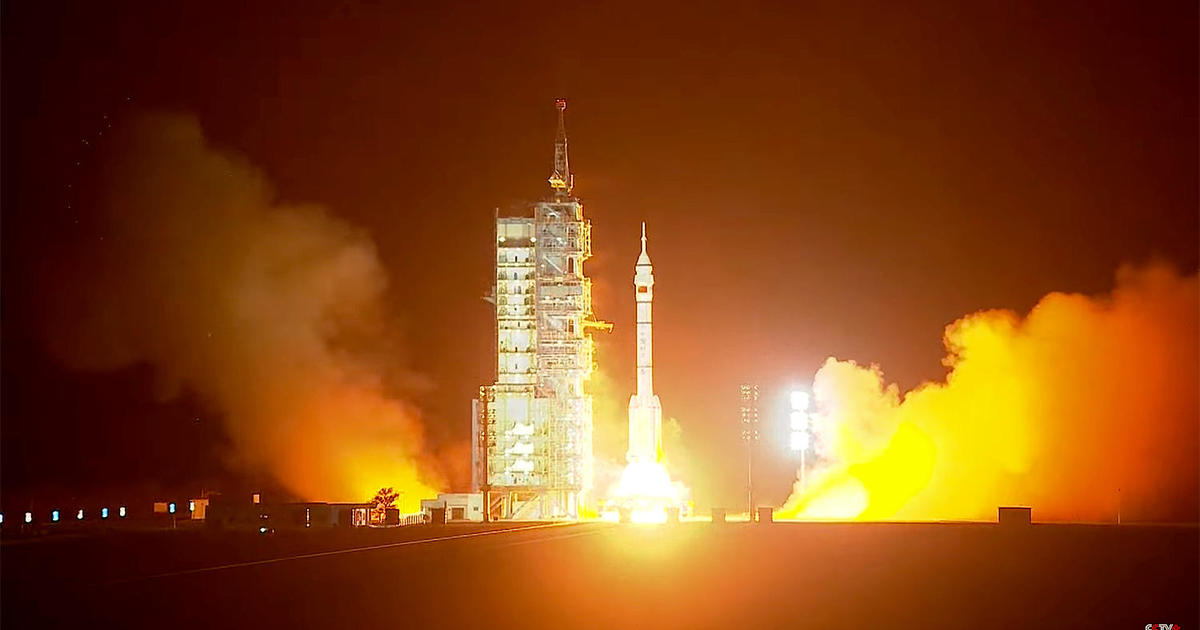Spacewalkers continue solar power system upgrade
NASA astronaut Kate Rubins and Soichi Noguchi, a Japanese astronaut who last walked in space more than 15 years ago, ventured outside the International Space Station Friday and completed assembly of two solar array support fixtures, part of a $100 million power system upgrade.
After handling multiple struts and bolts, Rubins reported a small pin-prick hole in one of her gloves and while there was no leakage and no emergency, she expressed concern about moving too far from Noguchi for additional work.
"There's a hole in my right index finger through the RTV (insulation)," she told astronaut Frank Rubio in mission control. "It's unchanged in appearance. And we have a middle finger peeling, my right middle finger, and ... gaps in the RTV on my left middle finger."
With installation of the solar array support fixtures complete, Rubio asked how she felt about leaving Noguchi, moving back to the space station airlock to drop off tools and then heading out to the European Columbus laboratory module to complete electrical connections for a recently installed experiment platform.
"This is kind of a pinprick hole versus RTV peeling," Rubins replied. "So I'm mildly concerned about going real far from Soichi."
Rubins' suit maintained the proper pressure throughout, but given time lost earlier assembling the solar array supports, flight controllers opted to call it a day without pressing ahead with work to finish wiring up the experiment platform.
"I think that's a good plan," Rubins said. "Thanks, Frank."
The work began at 6:37 a.m. EST when the astronauts switched their suits to battery power, officially kicking off the year's fourth spacewalk, the 236th since station assembly began in 1998.
"What a view!" Noguchi said as he floated out of the airlock some 260 miles above the Atlantic Ocean.
It was the fourth spacewalk for Rubins, including one last Sunday with crewmate Victor Glover to begin the assembly of the solar array fixtures. It also was the fourth spacewalk for Noguchi, whose last excursion came in 2005 during the first post-Columbia shuttle mission.
Last Sunday, Rubins and Glover installed the first of two new solar array support fixtures at the base of the lab's far left set of solar wings. The fixtures are designed to support new roll-out solar blankets that will be installed later to boost the station's power generation.
But the astronauts had problems fully seating two bolts connecting struts in the Tinker Toy-like fixture. Rubins and Noguchi first finished assembly of the second solar array support and used a torque wrench to tighten up the bolts in the first assembly.
"Amazing! I'm so happy to see that black line," Rubins said, referring to an indicator showing the second bolt was fully seated.
"It's amazing what a little torque can do," Rubio replied.
The flight plan then called for Rubins to venture to the front of the European Space Agency's Columbus laboratory module where the external experiment platform -- Bartolomeo -- is attached. While she worked to complete electrical connections, Noguchi planned to install a replacement wireless video transceiver attached to the central Unity module.
But given the time lost with the solar array assembly work, those tasks were deferred to a future spacewalk. Rubins and Noguchi returned to the airlock and repressurization began at 1:33 p.m., bringing the 6-hour 56-minute excursion to a close.
NASA plans to install six new ISS roll-out solar arrays, or IROSA, blankets that are scheduled for delivery later this year and next aboard SpaceX Dragon cargo ships. Additional spacewalks will be needed to install additional support fixtures and, eventually, the new roll-out blankets.
The space station is equipped with four primary solar array wings, two on each side of the lab's power truss. Each wing is made up of two 39-foot-wide blankets extending 112 feet in opposite directions. The first two-blanket wing was launched in December 2000 with additional pairs delivered in 2006, 2007 and 2009.
Solar cells degrade over time and NASA is adding six new blankets, at a cost of $103 million, to the existing power system. Each one of the new IROSA blankets measure 20 feet wide by 63 feet long when fully extended, generating more than 20 kilowatts.
The two support fixtures, or "mod kits," assembled last Sunday and Friday will carry two of the new arrays at the far left end of the station's power truss, tilting them at an angle so the new panels and the original arrays get sunlight.
Combined with the 95 kilowatt output of the original eight panels, the station's upgraded system will provide about 215,000 kilowatts of power, enough for NASA-sponsored research and anticipated commercial activity between now and the end of the decade.






